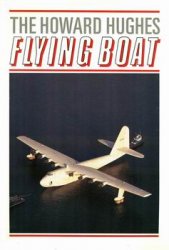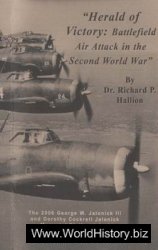The question facing the United States after the collapse of the Convention government was whether to favor Villa or Carranza. On September 9, 1914, in a display of evenhandedness, all restrictions were removed on arms shipments from the United States to Mexico. Both Villa and Carranza realized that they could not stay in power if the United States was openly hostile to them, so they attempted to generate favorable publicity for their respective factions.43
At the time of Huerta’s resignation, Villa appeared to have a better chance of securing U. S. backing, since he was viewed as more pro-American. His preventing looting after capturing Torreon in October 1913 impressed U. S. observers. Subsequently he protected U. S. commercial interests not only from true bandits but also from other revolutionaries who were called bandits by foreign firms. He so scrupulously respected U. S.-owned properties that opportunistic Americans would buy Mexican-owned land in order to protect it from expropriation. The Mexican owners preferred the meager prices offered by the Americans to having their properties seized by Villistas without compensation.44
To bolster his pro-American image, Villa even ordered his troops to protect the property of cattle baron William Randolph Hearst and that of the American Smelting and Refining Company. He pledged to a U. S. agent that he would respect U. S. interests and that he would not adopt antiAmerican positions. Villa’s stand on foreign investment was that it would be “religiously respected.” For a time, Villa was the ideal revolutionary from the U. S. point of view in that he defused the potential for violent upheaval by implementing reforms, but only seized Mexican properties.45
Many U. S. businessmen favored Villa since he was seen as a strong leader, Diaz style, who could rule Mexico with an iron hand. They felt that the proper solution to Mexico’s problems was control, not democracy. After the landing at Veracruz, even though nominally Carranza’s subordinate, Villa ingratiated himself to Wilson by publicly declaring that he had no objection to the landing since its goal was to oust Huerta. Wilson indicated his pro-Villa position in a December 1914 conversation with a French military attache in Washington. He stated: “Villa today represents the only instrument of civilization in Mexico. His firm authority allows him to create order, and to educate the turbulent masses of peons so prone to pillage.”46
Carranza, a hacendado himself, was loath to seize haciendas and so raised money by taxing U. S. interests. This initially turned the United States against him, as did his comments concerning the landing at Veracruz and the Niagara conference. Carranza’s unwillingness to accept policy favored by the United States led President Wilson to state in a July 1915 memo to Secretary of State Robert Lansing, “I think I have never known of a man more impossible to deal with on human principles than this man Carranza.”47
With Huerta gone, the Wilson administration no longer had a rationale for occupying Veracruz. As a result, U. S. troops withdrew on November 23, 1914, after having made substantial sanitary improvements. As U. S. troops departed, they turned over to Carranza war materiel seized when U. S. troops landed, other arms intended for Huerta that had arrived after the U. S. landing, and arms brought by U. S. troops and not removed. This materiel, which included cars, trucks, radios, artillery, machine guns, 12,000 rifles and carbines, 3,375,000 rounds of ammunition, and 632 rolls of barbed wire, was used by Obregon to rout Villa’s forces. The United States also turned over to Carranza the 2,604,051.20 pesos that it had collected in customs revenues while it occupied the port. As historian John Hart declared, “The Americans’ transfer of arms stored at Veracruz to the Constitutionalists in November 1914 turned the tide of the revolution.” No official explanation was given as to why these arms were delivered to Carranza. Perhaps it was simply a matter of expediency—Carranza’s forces controlled the area and no Convention forces were nearby.48
By 1915, economic pressures had forced Villa to change his policy. He had exhausted his supply of cattle, so he began to tax American-owned haciendas and mining companies. He also began seizing from foreigners whatever goods he needed and threatened mining companies with seizure if they did not resume operations. The U. S.-owned Cananea Copper Company was subjected to forced loans. Since Carranza could also rely on oil revenue and customs duties, soon taxes levied by Villa exceeded those of Carranza.49
Villa’s image in the United States also suffered due to his association with Gutierrez and the Convention government. Gutierrez had led guerrilla attacks on American-owned mines in San Luis Potosi. As provisional governor of that state he had abolished debt peonage, established minimum wages, and threatened nationalization of foreign-owned property. Not only was Gutierrez seen as too radical but the Convention was linked with Zapata, who was in disfavor in Washington.50
In contrast to Villa, Carranza was the only viable elite leader left in Mexico. Carranza’s return of confiscated estates to their former owners and his lack of close ties to Europeans contributed to his becoming an increasingly attractive option for the United States. Beginning soon after his issuance of the Plan of Guadalupe, Carranza sent agents to the United States to promote the Constitutionalist cause and to pay for favorable publicity. This propaganda campaign intensified after Huerta’s fall as Mexican consuls in the United States promoted Carranza and subsidized pro-Carranza newspapers. Beginning in 1916, an attractively designed magazine, the Mexican Review, was mailed to a target list of 15,000 influential Americans. At the same time, Carranza’s spinmeisters portrayed Villa as a common bandit who served as a tool of reactionaries. All these factors led the United States to cast its lot with Carranza.
The impending Great War began to dominate U. S. thinking, leading policy makers to seek a rapid end to hostilities in Mexico. Early in his administration, Wilson had sought to maintain parity among revolutionary groups, thus allowing the United States to force them into compromise. However, as war began to loom in Europe, the United States decided to pick a winner, propel him to a rapid victory, and thus prevent Germany from taking advantage of on-going conflict to meddle in Mexican affairs. On October 10, 1915, Secretary of State Lansing wrote in his diary, “Our possible relations with Germany must be our first consideration; and all our intercourse with Mexico must be regulated accordingly.”51
As a result of Villa’s taxes, effective pro-Carranza propaganda, and the threat posed by Germany, on October 19, 1915, the Wilson administration granted Carranza de facto recognition. That same day, he placed an embargo on the sale of arms to all other factions.52




 World History
World History









